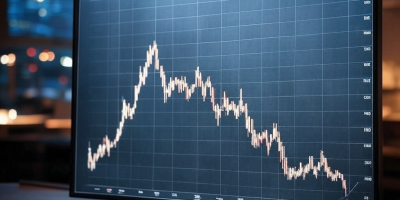Market recap, open positions, new signals, and performance of six trading strategies. Tactical asset allocation, mean-reversion, cross-sectional momentum, and equity long-short. Access the full report with a Market Signals or All-in-One subscription.
U.S. securities exchanges will be closed on Monday, January 15 for Martin Luther King, Jr. Day
Reminder: Subscribers with an X account not already followed by @mikeharrisNY can email us with the details.
Contents
1. Market Recap and Comments
2. Ensemble Performance
3. Positions and Performance of Strategies
4. Signal Summary for Next Week
1. Market Recap and Comments (January 8–January 12, 2024)
It was a good week for all assets except commodities, with stocks (SPY, +1.9%) gaining the most. High yield (HYG, +1.3%) and lower duration bonds (IEF, +0.9%) also had respectable gains. International stocks (VEU) were up 0.6%. Gold (GLD) managed to end the week slightly higher amid rising volatility in precious metals.
For the first two weeks of the year, large-cap stocks (SPY) are up 0.3%, but the equal-weight S&P 500 ETF (RSP) is down 1.1%, which means that breadth has deteriorated. International stocks (VEU) are down 0.9% in the first two weeks of the year, while long-duration bonds (TLT) have lost 2.4%. Gold (GLD) is down 0.8%
Since the start of 2022, the TLT ETF is down 31%, while international stocks (VEU) have lost 3.1%. The SPY ETF is up 3.5% in the same period. Commodities (DBC) and the US dollar index (UUP) are up 12% and 14.9%, respectively, since 2022. Note that in the same period, gold (GLD) is up 11%.
In the last two years, many systematic strategies have struggled, but equities have not moved much and bonds have cratered. Financial mainstream media narratives focus on the spectacular returns of last year only, but in 2022, many systematic strategies offered a hedge during the severe equity market correction. When considering only up years, in 2023, the NSSDAQ-100 had its fourth-best performance but at the same time the worst two-year performance. See this article for a few more interesting statistics.
The performance of the stock market has a very low correlation with economic data, and it is more related to reflexivity, expectations, and greed. Bonds are a different market that is inextricably related to supply, rates, and inflation. Commodities depend on supply and demand, forex rates, and, at times, manipulation by producers and traders. Forex rates are hard to forecast because they depend on political decisions.
2. Ensemble Performance
Access the full report with a Market Signals or All-in-One subscription. By subscribing, you have immediate access to hundreds of articles. Market Signals subscribers have immediate access to hybrid asset allocation and dynamic momentum monthly signals and more than two hundred articles in the Premium Education section, and All in One subscribers have access to all premium content (except daily mean-reversion signals.)
|
This post is for paid subscribers
Already a subscriber? Sign in |
Ultimate Trading Package
Charting and backtesting program: Amibroker. Data provider: Norgate Data
Disclaimer: The Premium and Weekly Signals are provided for informational purposes only and do not constitute investment advice or actionable content. We do not warrant the accuracy, completeness, fitness, or timeliness for any particular purposes of the Premium and Weekly Signals. Under no circumstances should the Premium or Weekly Signals be treated as financial advice. The author of this website is not a registered financial adviser. Before subscribing, please read our Disclaimer and Terms and Conditions.
Copyright notice: Any unauthorized copy, reproduction, distribution, publication, display, modification, or transmission of any part of this report is strictly prohibited without prior written permission.








